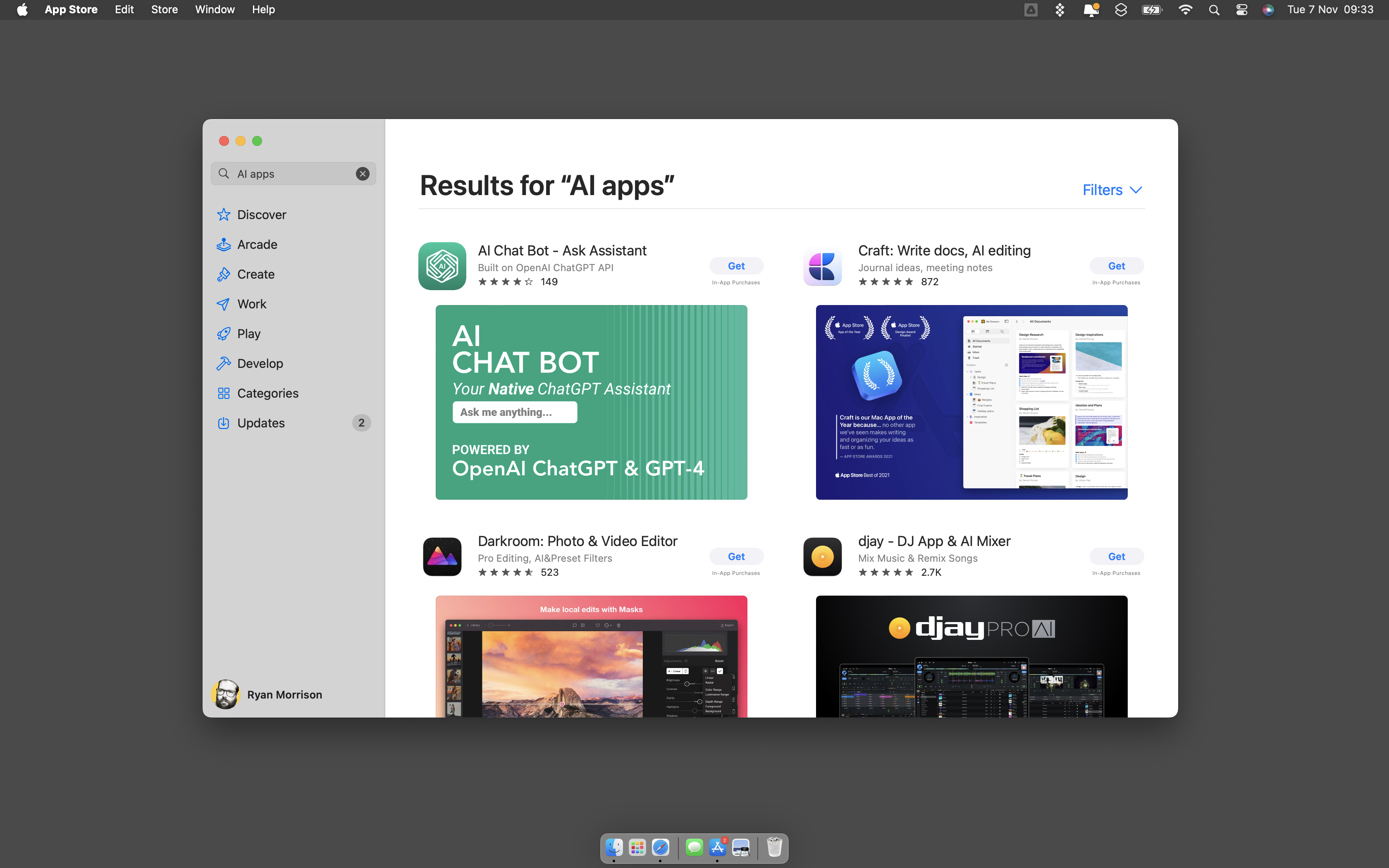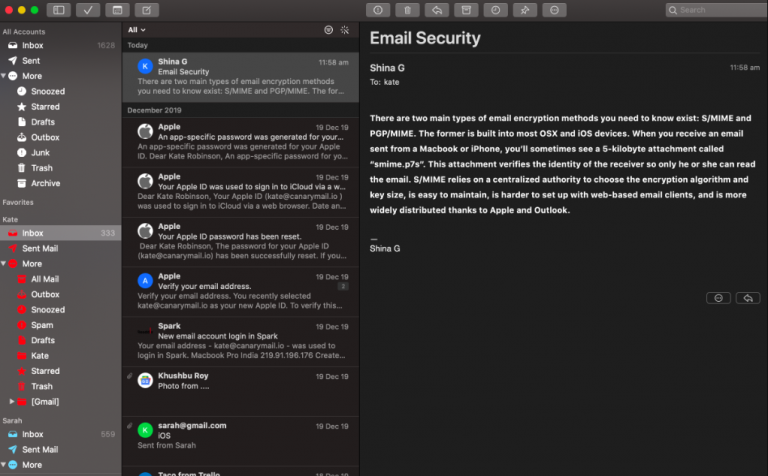5 best AI apps for Mac — here's what I use to work smarter

Every new app, product, and service seems to declare its use of artificial intelligence (AI), from the neural engines in Apple’s new M3 chips to a new version of Grammarly capable of writing a paragraph of text without you getting involved.
Since the launch of ChatGPT by OpenAI just under a year ago every major tech company has integrated AI in some form or another. This includes Microsoft with Copilot in Windows 11 and 365 as well as Google with Duo in Docs and its virtual assistant Bard.
Every new app, product, and service seems to declare its use of artificial intelligence (AI, from the neural engines in Apple’s new ul AI-powered apps.
The apps I’ve selected cover email, image generation, writing and even a web browser focused on improving productivity and enjoyment through AI.
Grammarly Go

Grammarly is one of the most well-known writing assistants on the web, usually found through a plugin for your favorite web browser. It provides context-aware recommendations to improve the grammar and spelling of whatever you happen to be working on.
Grammarly Go adds the ability to use generative AI, similar to that found in ChatGPT, to completely re-write a paragraph or even create a new paragraph of text from scratch.
When writing you can use the compose feature to identify any gaps in the story, re-write what you've already written in a more professional or academic tone and even craft a perfect email reply.
Get instant access to breaking news, the hottest reviews, great deals and helpful tips.
While many of these features are likely to be a native part of apps like Gmail, Docs and Word in the future, Grammarly Go can work across all apps and is available today.
The free version only gives you 100 prompts per month though, which can run out fairly quickly if you are using it for help with emails on a daily basis.
Arc Browser

Arc Browser is a modern web browser built for macOS that uses AI for advanced customization features. This includes the ability to react to your browsing habits and needs, adapting views and panels to reflect what you use most often.
The initial interface is very different to Safari or Chrome with the browser search bar, shortcuts and menu items on a left-hand menu view rather than at the top of the screen. It allows for tab pinning, different spaces customized to specific use cases and a split view.
It is a Chromium wrapper rather than a new browser engine, so pages display in much the same way they would using Chrome or any other Chromium-based browser. The biggest change is the layout, use of shortcuts and its use of AI for personalization.
Its use of AI is most obviously seen in its tab and download management. For example, it can automatically rename a tab to be more reflective of the content — instead of just taking the title defined by the webpage. It does something similar for download files, renaming them to reflect the content/source of the file rather than whatever it was named when uploaded.
Canary Mail

One of the more high-profile alternative email apps, Canary Mail has AI writing tools embedded including writing emails. It gives you the example of a prompt where you write an email to Neil Armstrong to congratulate him for landing on the moon. This feature is only available with a £1.99 per month pro subscription but the first 30 days are free.
Like all good email apps, it works with multiple email providers including Gmail and Outlook-based accounts. On the surface, it looks much like the default Mail app on macOS but can allow you to more quickly file emails or tag them for follow-up.
The built-in AI assistant can also filter your emails to, for example, only show you ones that are important, show you events mentioned, or even automatically unsubscribe from newsletters. Some of these features are available in Gmail itself or by using Bard with extensions turned on.
The issue with the AI assistant is that it is limited to the most recent 400 emails. This makes asking it to do a deep dive and find everything on a specific topic — such as a trip you may have taken a few years ago — pointless. But the smart organizing, labeling and encryption features make up for the AI shortcomings, and it is likely to improve over time.
Lensa

One of the most well-known features of Lensa is its ability to create a custom avatar based on an uploaded selfie. However, that is a feature reserved for the mobile app. On the Mac, its focus is improving the images you upload, with features like Magic Correction.
Once the selfie is loaded a long list of sliders is shown on the left. These allow you to make small changes to your face from removing eye bags to brightening up lips. You can also just click Magic Correction and have the AI work out what should be done.
The default free plan gives you three image generations per day but you can make that unlimited for $20 per year.
Filmora

The final app is Filmora: a video editor with smart AI editing features. In version 13 it adds automatic denoising of videos, the use of text-to-speech to create an automatic voice-over and even AI image-to-video effects and animated titles.
These are on top of existing AI features such as smart sorting, automatic titles and Smart Cut — a feature that allows for the selection and removal of unwanted objects. There is also a tool to automatically stretch audio clips to match the video.
The base version of the app, including video editing capabilities, is free to use but does include a watermark on exported videos and limited access to AI tools.
You can use more AI tools by purchasing AI credits but the default is 100. The fully functional version removes the watermark and offers unlimited credits for AI tools but costs $49.99 per year.
More from Tom's Guide
- I just experienced the future of Mac gaming
- Could Apple finally be giving a damn about MacBook gaming?
- Gaming on Mac? Disable this hidden macOS Sonoma setting now

Ryan Morrison, a stalwart in the realm of tech journalism, possesses a sterling track record that spans over two decades, though he'd much rather let his insightful articles on AI and technology speak for him than engage in this self-aggrandising exercise. As the former AI Editor for Tom's Guide, Ryan wields his vast industry experience with a mix of scepticism and enthusiasm, unpacking the complexities of AI in a way that could almost make you forget about the impending robot takeover.
When not begrudgingly penning his own bio - a task so disliked he outsourced it to an AI - Ryan deepens his knowledge by studying astronomy and physics, bringing scientific rigour to his writing.
